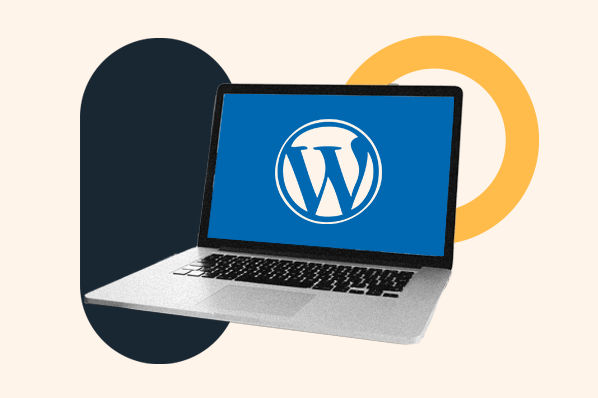If you're in the market for WordPress plugins, we recommend putting a WordPress database optimization plugin like WP-Optimize on your list.

Over your WordPress database gets bogged down with unnecessary files and code, including outdated information, post revisions, spam comments, and unused tags. Over time, this unwanted data slows down your website and diminishes the visitor experience.
To prevent this issue, you have to clean and optimize your database. The WP-Optimize plugin is an effective tool for removing all the non-essential data to improve your site’s performance. In this post, we’ll discuss:
- why your database matters.
- why you should regularly clean your database.
- how WP-Optimize can speed up your WordPress website.
- why you might consider WP-Optimize premium.
Let's get started.
Why Your WordPress Database Is Essential
Your WordPress database houses all your website’s content—themes, pages, and posts. This data isn’t just your current information. Your database stores all your past revisions, like when you wanted to use that complex theme but ended up using a different theme.
Without your database, you wouldn’t have a website for visitors to see. So, it’s an irreplaceable component of your business’s online presence. That’s why it's so important to properly maintain your database to prevent any future problems.
Benefits of a WordPress Database Cleanup
Despite being an essential part of your website, most website owners don’t clean up their databases. It runs quietly in the background, so no one thinks to check their database to make sure it's working efficiently.
Think of it like spring cleaning, the annual practice of cleaning your home from top to bottom. You’re wiping down windows, scrubbing your floors, and removing unwanted clothing from your closets. The goal is to start the new season fresh without any clutter.
Your database should contain only a few revisions of your website. If it has too much data, it can cause your website speed to slow down. So, here are two major benefits of doing a WordPress database cleanup:
- You save space. Hosting providers give you a limited amount of space to create and run your website. After you get rid of all the unwanted data, you’ll have more room to build the website you want without worrying about whether you’ll have enough space.
- You optimize website performance. Every action on your site is stored on your database. As more data gets stored, your database will take longer to process information. Cleaning up your data increases your website’s page load time.
Benefits of Using WP-Optimize to Improve Your WordPress Database
The good news is that cleaning up your WordPress database doesn’t have to be a major chore. WP-Optimize is a free, all-in-one solution to help you clean your database, compress your images, and cache your web pages. Let’s discuss its main features below.
Clean your database.
To keep your database clean, WP-Optimize automatically detects and clears out any unnecessary data like spam comments, old post revisions, pingbacks, and trackbacks. This process helps you regain any lost space on your database and boosts your site’s performance.
This must-have WordPress plugin only retains recent copies of your data, so you don’t burden your database with old data. You can set the time frame for how long you want to retain your posts. After every optimization, you get a report showing your database statistics along with how much space you saved.
The plugin also gives you the option to optimize your data tables, and you can select which specific optimizations you want to make on your database.
.webp?width=650&height=423&name=wordpress%20database%20optimization%20plugin%20(update).webp)
Another standout feature is the ability to schedule cleanups, leaving one less task for you to remember and complete manually. You can schedule daily, weekly, or monthly cleanups, plus run additional cleanups whenever you need.
Compress your images.
Large image files are often overlooked as an issue in website optimization, but it's also one of the most common causes of slow load times. Larger files take longer to load, and image files are often the largest files on a web page.
To solve this issue, WP-Optimize comes with a built-in lossy image compression tool to convert large images into compressed files and saves them in your media library. The compressor works with PNG, JPG, and GIF files up to 5 MB.
Plus, you’ll save time compressing multiple existing images at once with the bulk compression feature and the auto-compress function that lets you automatically compress images as they’re uploaded to WordPress.
%20(1).webp?width=650&height=452&name=wordpress%20database%20optimization%20plugin%20(update)%20(1).webp)
Cache your pages.
Page caching improves your website’s performance by keeping dynamic data in a temporary storage area so your server can retrieve pages faster.
After WordPress processes the dynamic files to generate your pages, WP-Optimize saves it as a static HTML file in a cache folder. That way, your visitor doesn’t have to wait several seconds to view your pages.
The plugin also includes a browser cache feature to instruct visitors’ browsers to reuse cached resources, and you’ll have tight control over which page elements are and are not cached.
-1.webp?width=650&height=449&name=wordpress%20database%20optimization%20plugin%20(update)-1.webp)
Minify CSS and JavaScript files.
The newest feature of the WP-Optimize plugin is its CSS and JavaScript minification tool. Minification is the process of removing unnecessary data from your website’s code files to make them smaller and thus load faster, improving the user experience.
This tool also combines files to further consolidate them, and allows you to defer loading of non-critical CSS and JavaScript. In other words, your page will only load above-the-fold CSS and JavaScript assets when the page first loads to give the impression of faster speeds. When the user scrolls, these assets are then loaded.
WP-Optimize Premium
WP-Optimize is a freemium product, offering both a capable free version and an expanded premium version. WP-Optimize premium sells for $49/year for use on up to two sites, $99 per year for use on up to five sites, and $199/year for unlimited sites.
With the premium version, you get access to features including
- Fine-tuned optimization: The paid version lets you select individual tables to run optimizations on. The free version only lets you optimize all tables at once.
- Deleting images: WP-Optimize premium will get rid of images you no longer use on your site for you, freeing up even more space.
- Lazy loading:Lazy loading is another technique for reducing load times. Below-the-fold images are not loaded in full until the user scrolls to them, making for a faster initial page load.
- Multisite support: You can run WP-Optimize Premium on WordPress Multisite.
- Exact scheduling: In the paid version, you can choose specific times to run your cleanups.
- Support: You’ll have access to in-person support from the WP-Optimize team in addition to the plugin documentation.
Speed up your WordPress site with WP-Optimize.
Your website database probably could use some spring cleaning. With the help of WP-Optimize, you can remove all the unwanted data and optimize your website’s performance. And, as you know, faster page load times mean a better experience for your visitors.
Editor's note: This post was originally published in October 2019 and has been updated for comprehensiveness.







